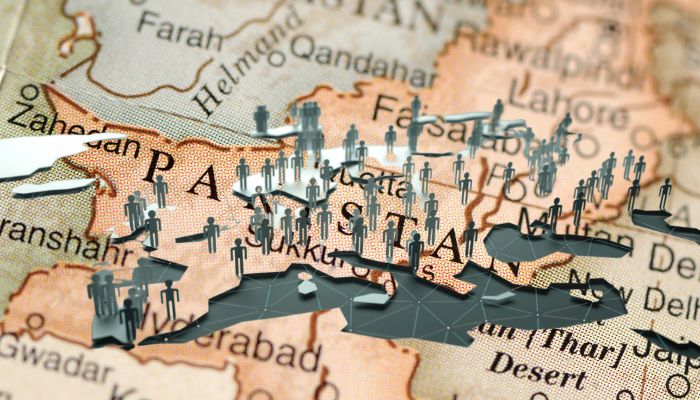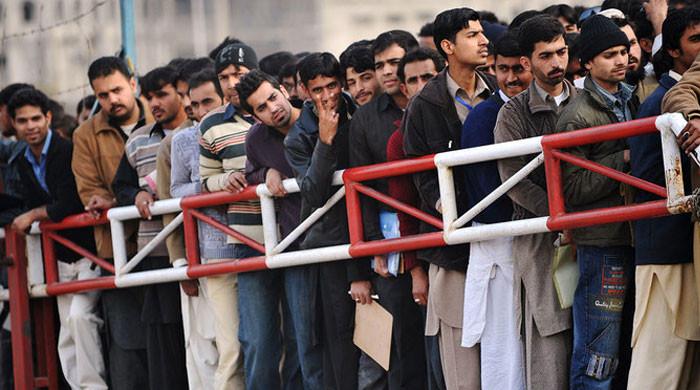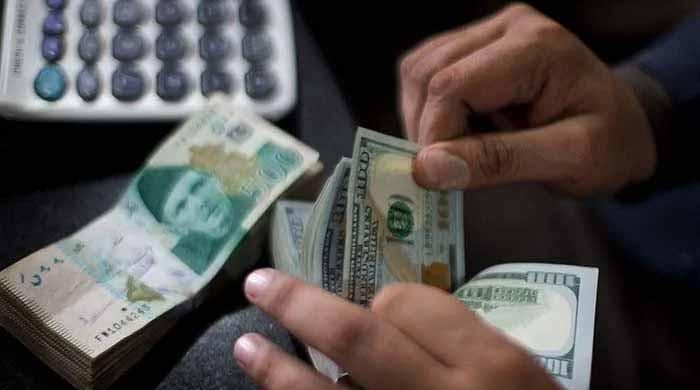Pakistan is a demographic outlier (Part 1)
In a world of declining fertility rates and stable population numbers, Pakistan is an outlier that is heading close to environmental devastation
August 17, 2022

In 1777 when a friend bemoaned that Britain’s future was ruined after its army had lost a battle to American colonists in the latter’s War of Independence, the economist and moral philosopher Adam Smith responded that “there is a great deal of ruin in a nation”. Reflecting on the course of this country over the past few decades, one can only agree with Smith’s wise words.
Our current situation – avoiding a Sri Lanka type debt default by the narrowest of margins – has been building for the past several decades because of the profligate ways of successive governments.
Economic policies have encouraged consumption fueled growth driven by imports at the expense of investment in productive capacity and in social sector development. Thus between 2000 and 2020 household consumption averaged 79 per cent of GDP (with a low of 75 per cent and a high of 83 per cent). On the other hand, during this period investment averaged a meager 17 per cent of GDP (ranging from 15 per cent to 19 per cent).
Unsurprisingly, the World Bank’s data for 2020 ranked Pakistan at a low 133 out of 151 countries in terms of the percentage of Gross Domestic Product (GDP) devoted to investment. Why is this a problem? It means that as a nation we don’t save enough to build adequate productive capacity within the country so that rising per capita incomes automatically leads to rising imports and chronic trade imbalances. Which is why Pakistan has been yo-yoing between growth and stabilization policies so far.
How much development has taken place in the country over the last 20 years? The indicator most widely used to gauge this is Gross National Income (GNI) per capita (per capita GNI is a better indicator of income levels for countries that depend significantly on remittances like Pakistan than is per capita GDP) which in Pakistan increased from $510 in 2001 to $1500 in 2021. But whether this is a reliable measure of development is questionable in the minds of many economists who know the shortcomings of GDP and GNI as measures of a population’s living standards.
One widely used alternative indicator developed by the United Nations is the country’s absolute score and relative ranking on the Human Development Index (HDI). This includes proxies for three important objectives of development: health, education, and income. In 2020 our HDI ranking was a lowly 154 out of 189 countries, meaning that Pakistan lags behind most other countries in human development. Therefore the answer to the question posed at the beginning of the previous paragraph has to be: very little, if any.
A comprehensive indicator of deprivation among the population that takes into account poverty and its severity across ten indicators relating to education, health, and standard of living is the Multidimensional Poverty Index (MPI). This measure is more salient than the income measure of poverty set by the World Bank at $1.90 per person per day (on a purchasing power parity basis) since it identifies the different deprivations that impact the poor which the income measure renders opaque.
The last available MPI for Pakistan in 2017-18 shows that 38.3 per cent of the population is suffering from multidimensional poverty compared to only 4.4 per cent classified as poor using the World Bank monetary measure of poverty. This is a shocking statistic and an indictment of the fixation on the trickle down model of economic growth that places GDP expansion at the front and center of every discussion on a government’s performance.
So it might be the case that a debt default has been averted thanks to funds from the IMF and other friendly countries. But is this a sustainable outcome? What happens next year and the year after that and so on? Will we find ourselves again teetering on the edge of default given the fundamental structural problems besetting Pakistan’s economy that no government has been able to deal with successfully?
There are certain key policy matters that require immediate attention.
The energy sector poses perhaps the most intractable issues for any government as it presents a witches’ brew of bad choices chief among which is the ever growing problem of the so-called circular debt. This debt is the result of non-payment of dues by consumers, distribution companies, and government-owned enterprises.
A position paper on the energy sector in Pakistan prepared by the Asian Development Bank (ADB) indicates that the circular debt increased from 1.6 per cent of GDP in 2008 to 5.2 per cent in 2020 – that is: it’s a financial sinkhole.
With oil and gas prices at elevated levels not least due to sanctions imposed on Russian oil exports, loadshedding is frequently resorted to by the utility companies for hours on end all over the country so as to economise on the usage of furnace oil and gas. The need therefore is to try and switch to renewable sources of energy at the earliest even though this may upset our traditional energy suppliers and other vested interests such as domestic car makers.
There is an urgent requirement to promote efficiency in water usage and water conservation in the agricultural sector which is the largest user of water in the country. Because of climate change that is leading to wide variations in temperature and rainfall as well as increasing glacier snow melt, we need to overhaul our wasteful overuse of water for irrigation through use of appropriate technology. As a food insecure and water stressed country, this is not a matter of choice but one of necessity.
The tax-to-GDP ratio which averages around 10 per cent currently should reach at least 15 per cent of GDP which, according to public finance experts, is the minimum required to enhance state capacity to improve the physical and social infrastructure.
The World Bank recently estimated that 80 per cent of Pakistanis’ wealth has been accumulated as property (mainly land and residential building). For historical reasons, this potential source of government revenue is lightly taxed or exempt from tax as if to imply that people who own property somehow merit special treatment. However, if we fail to tap this major source of potential revenue (which is also a means for tax evasion) then we’ll continue to lean heavily on indirect taxes which hit the poor hardest and exacerbate poverty and inflation.
The big question that every Pakistani leader tiptoes around is what to do about the ever-expanding population. According to the United Nations (UN), Pakistan’s population is projected to grow to 356 million by 2050 which is about 56 per cent greater than the current number. In a world of declining fertility rates and stable population numbers, Pakistan (along with some countries in sub-Saharan Africa) is an outlier that is heading perilously close to the Malthusian specter of famine and environmental devastation if it evades the issue by burying its head in the sand ostrich-like to avoid facing up to a serious crisis.
To be continued..
The writer is a group director at the Jang Group and can be reached on [email protected]
Originally published in The News









